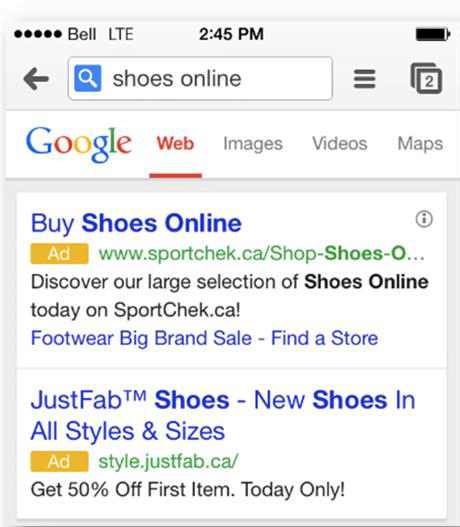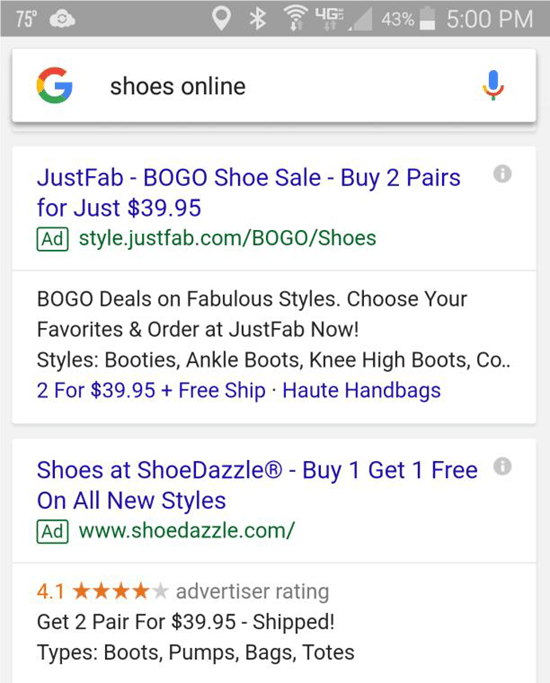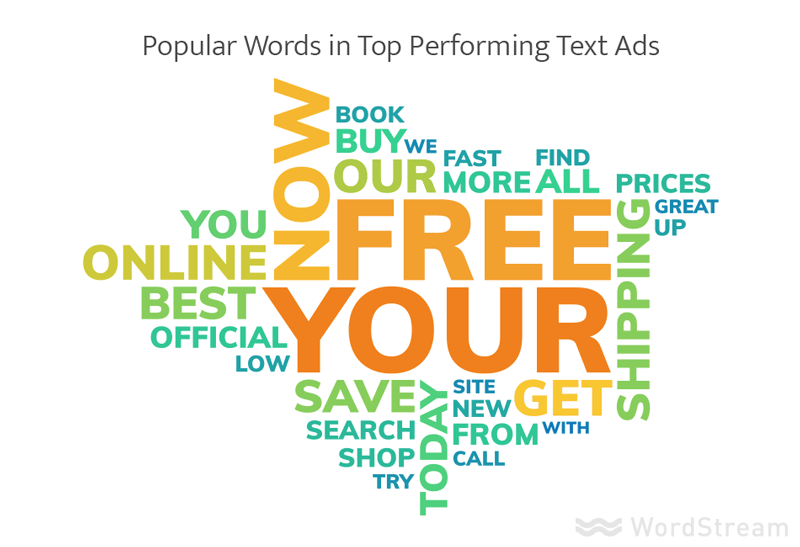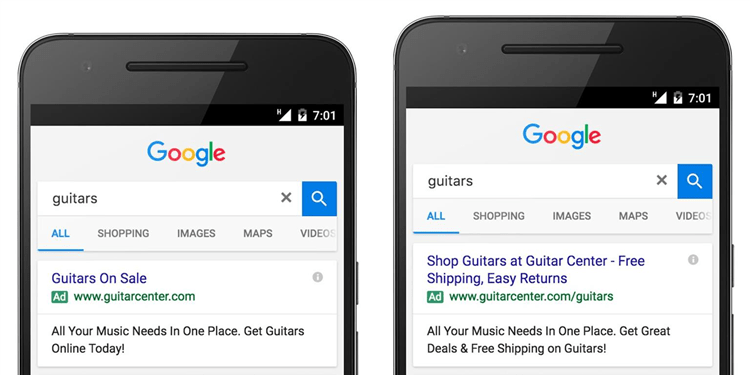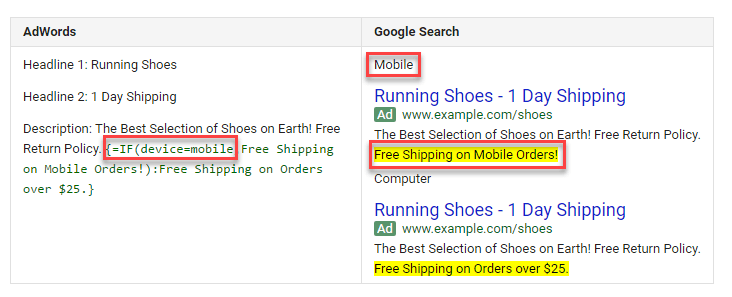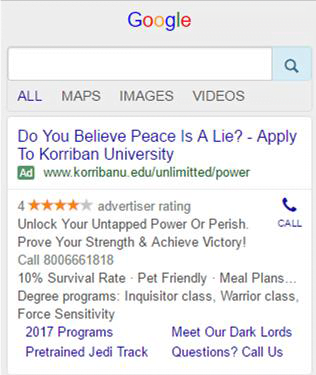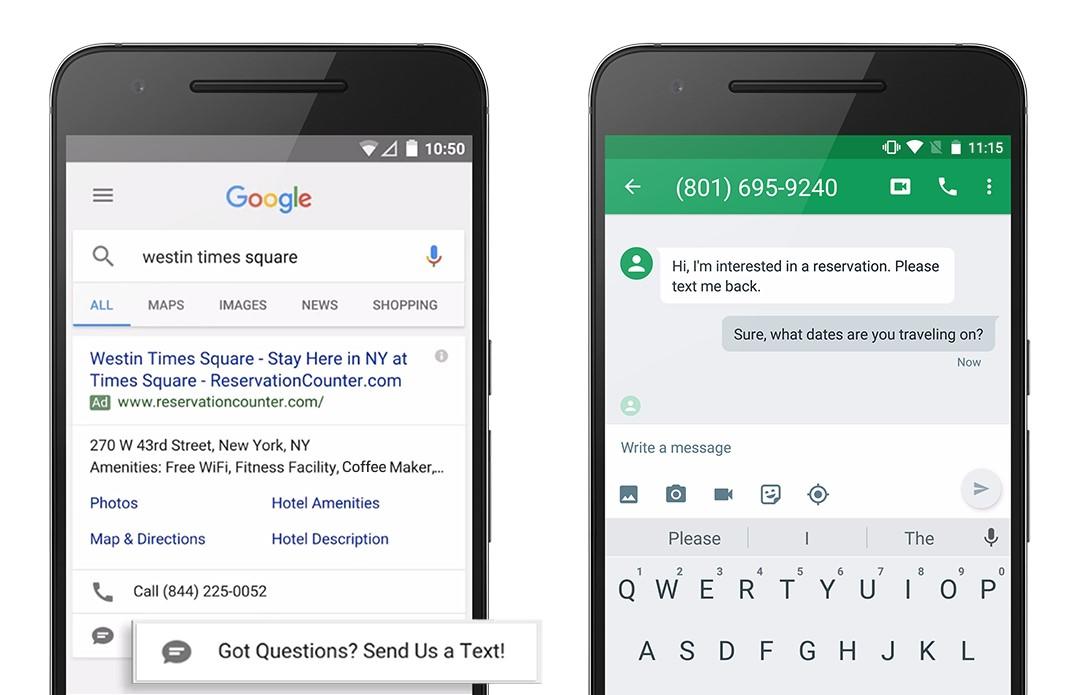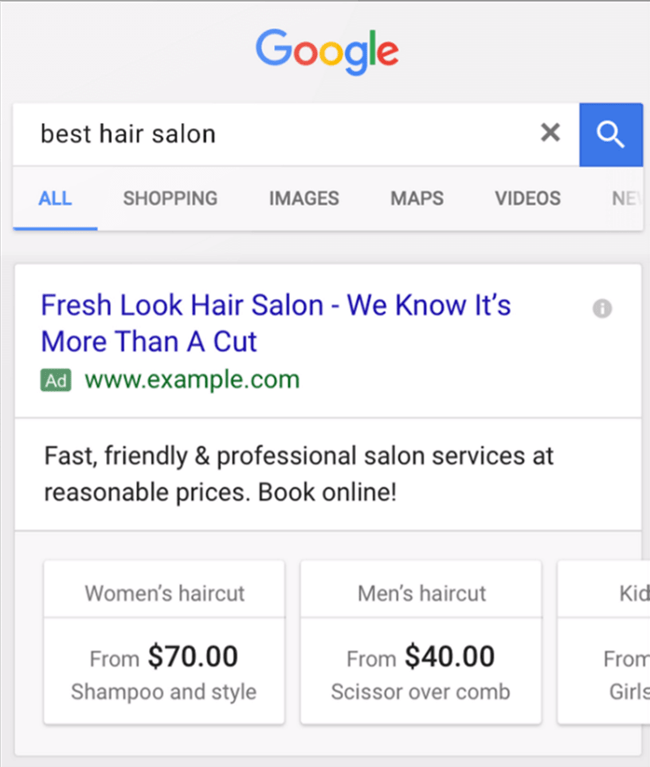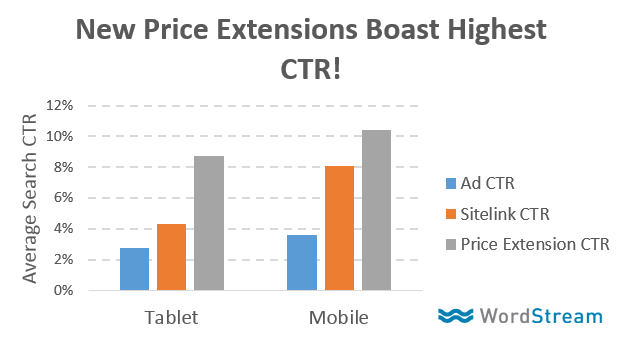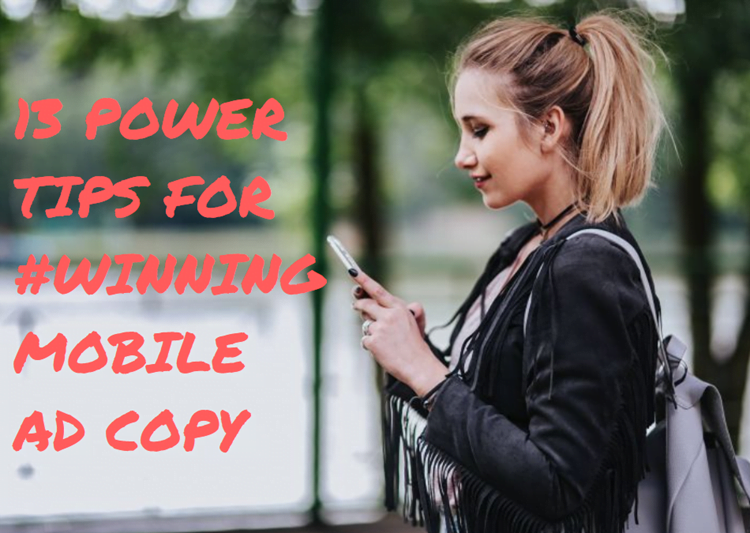
Just in case you (STILL) need convincing that having a mobile strategy isn’t optional, here are a few stats on mobile adoption to consider:
- Men and women aged 18-29 have a 92% adoption rate
- Men and women over 65 have a 42% adoption rate
- All income levels have at least 60% adoption – that rises to 93% when you look at consumers making over $75K a year
What does it all mean? Your customers are on mobile, and if you want more customers, you need to create ads that speak to the specific intent and experience of a mobile user. For example, 40% of mobile searches have local intent. (Historically, this figure has been closer to 20% on desktop.)
There are also simply fewer available ad spots on the mobile SERP, and expected CTR by positions falls off much more sharply on mobile than on desktop. In other words, if you’re not in one of the top two spots, you’re probably not getting many clicks.
Long story short: Mobile market share is huge, and not having a mobile plan is profit suicide.
Here are 13 quick tips to help you adjust your messaging so your mobile ads resonate with the right people at the right time.
1. DON’T focus too much on the keywords
One online shoe retailer learned their lesson – it’s not really enough just to pepper your mobile ad copy with the keyword you’re bidding on. This ad mentions “shoes” twice in the headline but is otherwise a bit lackluster:
Now check out this version – the keyword “shoe” only appears once, but it’s a bigger ad with a lot more information to dig into. That makes it more clickable – and accordingly it nabs the top ad spot!
There are a few other lessons we can take away from this great mobile ad…
2. Mention special offers and sales
Everyone loves a BOGO offer! JustFab’s improved mobile ad mentions the buy-one-get-one free offer in both the headline and the description lines, PLUS it adds a call-out for free shipping. Deal-hunters can’t resist getting stuff for free.
3. Feature prices in your ads
A lot of searchers scan for prices – JustFab’s first ad mentions “50% off,” but 50% off of what? Half a full-price Louboutin is still pretty unattainable for most shoppers.
The new ad spells out the exact pricing on the BOGO offer, which qualifies your audience – only people who are prepared to spend $39.95 are going to click through. (You’ll also weed out luxury shoppers who would rather buy the full-price Louboutins.)
✴️ Want even more ad copywriting tips? Download our free guide ⤵️
>> 10 Tricks to Write Exceptional PPC Ad Copy (With Examples!)
4. Establish brand/personality with adjectives
We’ve seen time and time again that no matter what industry you’re in, customers respond to emotional ads and marketing. Dry, overly keyword-focused ad copy doesn’t inspire people.
You’ll get higher click-through and conversion rates if you use strong, engaging words that demonstrate the personality of your brand (which, as a bonus, helps encourage customer loyalty). With a brand name like “JustFab,” it makes sense that this company would want to mention its “fabulous styles.” “Haute” adds flavor too.
5. Subtly encourage multiple purchases
If you can get a searcher who converts from your ad to make multiple purchases, that lowers your overall CPA. Notice how JustFab’s ad copy from the headline to the description to the sitelinks opens the path to selling multiple units per transaction:
- “Buy 2 Pairs”
- “Choose Your Favorites”
- “Styles”
- “Haute Handbags”
6. Test a “Call” CTA
Any time you’re writing ads for mobile users, consider what their next step will be. Mobile searchers will often want to call your business to ask a question or complete a transaction. Call-in leads are super valuable, and you can avoid losing conversions to a slow-loading or otherwise unpleasant mobile landing page experience if you cut it out of the path entirely.
Here’s an example of an ad that drops the “call us” call to action right in the headline. In this case, the ad itself should also have a click-to-call extension enabled.
7. Use the Expanded option!
Now that Expanded Text Ads are available, make sure you use them! Check out the difference between a non-expanded (left) and expanded (right) AdWords ad below as they appear on the mobile SERP:
All that extra copy gives you so much more room to demonstrate your value prop and convince people to click.
8. Use “if” customizers
IF functions are, as Allen Finn put it, like “ad customizers on steroids.” You can use them to automatically change the messaging in your ads when a given condition is met – i.e. tailoring the ad copy depending on the user’s device or some other characteristic of the audience, so it’s more relevant to them.
Using IF functions can save you a ton of time by consolidating ad groups or campaigns and cutting back on the number of different ads you need to create from scratch.
9. Shorten your extensions copy
On mobile devices, call-outs and structured snippets are much more likely to be truncated. So keep the copy in your extensions brief.
Most mobile ads will benefit from having a “call” call to action, but depending on the mobile landing page, we may find more value in folks interacting with our site than calling us (read e-commerce, applications, and other self-guided purchase paths).
10. Audit automated extensions
Google will now dynamically create extensions for you if you don’t opt out. This means you may end up with less than desirable site links, structured snippets, or CTA’s in your ads. If you want complete control over how your extensions appear, opt out.
11. Use message extensions
Certain ad extensions are particularly favorable to the mobile experience. Make sure you use them! Case in point, message extensions:
These extensions allow searchers to initiate a text conversation with you, right from the SERP! Lower-touch than a call, but still a valuable step toward conversion. In internal tests, we’ve found that ads with message extensions have 50% higher average CTR than a standard mobile ad.
12. Use price extensions
Another great mobile extension option: price extensions.
Price extensions only show on mobile and tablet devices. They appear in a carousel format so users can scroll left or right to see different pricing options, then click to reach your landing page.
These extensions have crazy high CTR’s – up to 4x the average of a regular mobile ad!
13. Use to click-to-call ads
Finally – consider click-to-call ads. This mobile ad type bypasses the landing page completely, so the only option for searchers is to call you.
These ads are your best bet when:
- Phone leads convert better for you than form-fill leads
- Your landing pages aren’t mobile-optimized
- A sale requires a conversation or relationship
Here’s more on setting up a call-only campaign. It is important to note that click-to-call ads have been getting less real estate on the mobile SERPs, and their CPC’s have been on the rise. Factor this into your budget if you decide to employ them!
What did we learn today?
In sum, there’s a lot you can do to make sure your mobile ads perform every bit as well as (if not better than!) your desktop ads. Just remember these final tips:
- Don’t write boring ads! Use all the real estate at your disposal to create ads that engage your prospect on the device they’re using.
- Leverage ad extensions to ease and enhance the path to conversion.
- Know whether your landing pages are equipped for the mobile space – and if not, use click-to-call ads instead!

